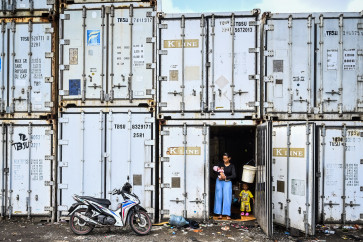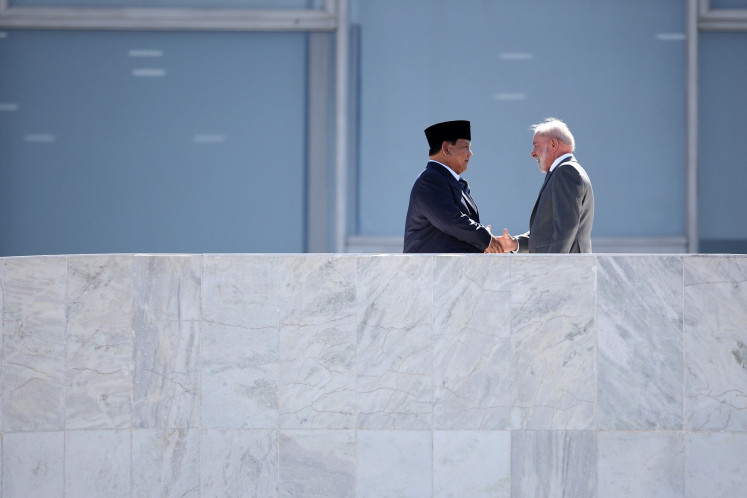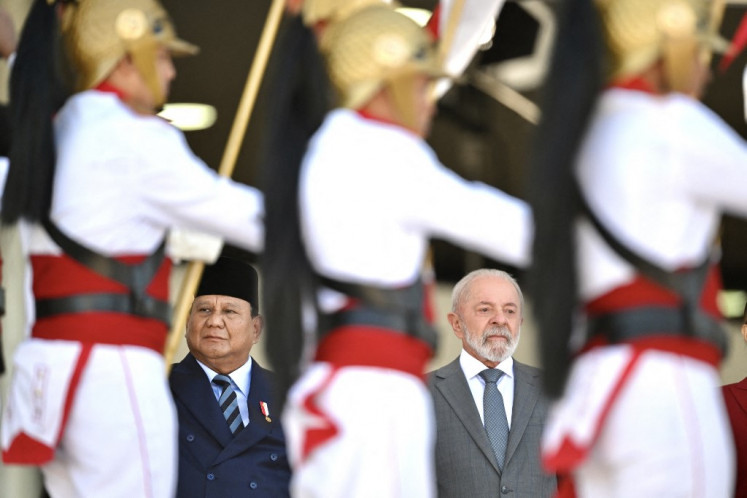Popular Reads
Top Results
Can't find what you're looking for?
View all search resultsPopular Reads
Top Results
Can't find what you're looking for?
View all search resultsWaluyo Sastro Sukarno: From Javanese arts to world festivals
Waluyo Sastro Sukarno had never dreamt of pursuing a career in the art of Javanese gamelan music and macapat (Javanese classical verses) until he finished senior high school
Change text size
Gift Premium Articles
to Anyone
W
a href="http://">Waluyo Sastro Sukarno had never dreamt of pursuing a career in the art of Javanese gamelan music and macapat (Javanese classical verses) until he finished senior high school.
At first, his only ambition was to be a camat or a district chief, so he could drive a VW Safari — better known those days as the VW Camat and the district chief’s official car — to work.
“The VW car had a unique shape, unlike most other cars I’d ever seen,” recalled Waluyo in his home in Kaplingan, Jebres, Solo, also known as Surakarta, Central Java.
Determined to score the top position at the district administration, Waluyo had even planned to enroll at the Academy of Public Administration (now Institute of Public Administration).
One day, however, his two art teachers, Miyadi dan Soedjito, reminded him he shouldn’t let his gift for nembang macapat (singing classical verses) go to waste.
“They mentioned it without pushing me, so it prompted me to give second thoughts to my yearning for the camat seat,” said the father of four.
While at primary school, Waluyo had already demonstrated a talent for Javanese poetry singing and won many contests of nembang macapat, keroncong (pop music with a Portuguese tinge), although only at regency-level sports and arts festivals.
In junior and senior high school, Waluyo was a member of the school’s choir and won various awards for his singing as well as the best muazzin title from adzan (call to prayer) contests in Blora, Central Java.
When his school joined a singing competition in Solo in 1979, his teachers recommended him for the Indonesian Kerawitan Academy (classical and gamelan arts), now Indonesian Arts Institute (ISI), Surakarta. After finishing senior high school, he eventually joined this academy.
“I felt I wasn’t good enough at the start. But I thought I had to be realistic. My parents didn’t earn much money, so I had to choose a field of study that would suit my skills, so that I could teach at my school after graduating, as suggested by Pak Miyadi,” said Waluyo, now a kerawitan lecturer at ISI, Surakarta.
Born in Blora in 1962, Waluyo grew up in a family relatively alien to the world of arts. His father, Sastro Sukarno, was a kamituwo (hamlet chief) with absolutely no interest in arts. Neither did his (late) mother, Srining. His first nembang teacher, he says, was the radio.
“As a child I used to listen to macapat and kerawitan programs as well as pop and keroncong music over the radio. I used to copy their vocal techniques,” related Waluyo.
As for his typical cengkok (vocal style), Waluyo said he had never trained, but developed his style naturally, perhaps owing to his long-time adzan practice.
“During my college study, I had been a muezzin for eight years at the court’s mosque. I still do prayer calls at the neighborhood mosque. Adzan is also an art, which is good for vocal training,” said the husband of Heni Nuril Muharamiwati, a junior high school teacher.
Graduating from the academy, Waluyo not only had a command of the vocal art and gamelan music, but also began to create gending (gamelan melodies) and tembang (sung verses). His connection to artists in Surakarta like classical composer Rahayu Supanggah, choreographers Sardono W. Kusumo, Suprapto Suryodharmo, musician Wayan Sadra, and the macapat community of Surakarta Court gave his talent a further boost.
“Pak Wiradi [late rector of ISI-Surakarta] injected a great deal of zest and encouragement into
my study. He was one of those people who shaped my career and personality.”
In 1991, Waluyo joined the Indonesia-America Cultural Festival in New York, USA, and Canada. His work entitled Cangkem (Mouth), stunned many festival participants. Two years later he was invited
to perform in New York again, for the Next Wave Festival, and in 1994 to Osaka, Japan, for the Culture Global Festival.
From 1995 to 2000, Waluyo also participated in the Festival of ASEAN Performing Arts in Singapore (1995), the International Gamelan Festival in Yogyakarta (1995), the Hongkong Arts Festival (1996), the Pacific
Music Festival in Sapporo, Japan (1999), and the Indonesian Dance Festival, at Taman Ismail Marzuki, Jakarta (2001).
At the end of 2010, Waluyo was a co-composer with Rahayu Supanggah for the music in “Opera Jawa: Tusuk Konde” (Opera of Java: Hairpin) at the International Gamelan Festival to mark the centenary of Tropen Museum in Holland.
Amid his busy teaching schedules, in 1996 Waluyo revived a musical group of the olden days, Santi Suara Laras Madya, in the sub-district where he lives. The group, blending Javanese and Islamic culture, was formed by King of Surakarta Paku Buwono V. The verses sung combine macapat with Islamic prayer, accompanied by some gamelan instruments and tambourines. Santi Suara, meaning good prayer, was very popular in Surakarta until the 1960s, but the music later vanished.
“I started with children because it’s easier to teach them music and morals. Then moved on to teenagers and adults,” said the man, who in 1997 joined the Sharq Taronalari International Music Festival in Samarkand, Uzbekistan.
Santi Suara Laras Madya has succeeded in creating harmonious relations among Kaplingan residents of diverse occupations and activities, ranging from lecturers, teachers, workers, bricklayers, market traders, to housewives and college students.
“Before Santi Suara was reopened, locals didn’t feel any connection to each other. Now they come together in an atmosphere of harmony and tolerance,” said Waluyo, who composed Shalawat Rambu, a blend of religious praises in gamelan melodies and macapat verses.
According to Waluyo, Santi Suara Laras Madya has also become a medium to disseminate virtue, in the way early Islamic proselytizers did.
“Macapat verses are imbued with ideals and moral teachings for good character building, just like adzan, calling people to pray in the quest for virtuous goals.”










